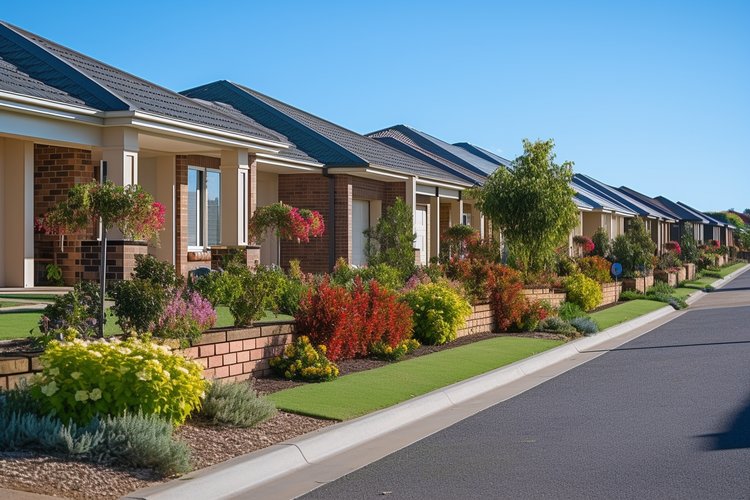The Quiet Revolution of Slow Neighborhoods
In a world that's constantly rushing, a new urban movement is taking root. Slow neighborhoods are reshaping how we live, work, and connect in our communities. This innovative approach to city planning prioritizes human connection, sustainability, and quality of life over rapid development. Read below to discover how these intentional communities are quietly transforming the urban landscape and challenging our notions of progress.

Origins of the Slow Neighborhood Movement
The slow neighborhood concept draws inspiration from various sources, including the Slow Food movement that originated in Italy in the 1980s. This culinary philosophy, which emphasized local ingredients and traditional cooking methods, soon expanded beyond the kitchen to encompass broader ideas about quality of life and sustainability. Urban planners and community activists began to apply these principles to city design, questioning the car-centric, fast-paced development that had dominated urban growth for decades.
The 2008 financial crisis also played a pivotal role in the emergence of slow neighborhoods. As large-scale development projects stalled, communities began to focus on smaller, more manageable improvements to their local areas. This grassroots approach to urban renewal laid the groundwork for what would become the slow neighborhood movement.
Key Features of Slow Neighborhoods
Slow neighborhoods are characterized by several distinct features that set them apart from traditional urban developments. Walkability is paramount, with wide sidewalks, ample green spaces, and mixed-use zoning that places residences, workplaces, and amenities within easy walking distance. This reduces reliance on cars, promoting both environmental sustainability and physical health.
Local businesses are prioritized over chain stores, fostering a unique neighborhood identity and supporting the local economy. Shared spaces, such as community gardens, parks, and gathering areas, are integral to the design, encouraging social interaction and a sense of collective ownership.
Perhaps most importantly, slow neighborhoods emphasize the human scale. Buildings are typically no more than four or five stories tall, creating a more intimate streetscape that encourages face-to-face interactions and a stronger sense of community.
The Social Impact of Slow Living
The slow neighborhood movement is having a profound impact on social dynamics within urban communities. By prioritizing pedestrian-friendly spaces and local businesses, these neighborhoods naturally foster more frequent and meaningful interactions among residents. This increased social connectivity has been linked to improved mental health, reduced feelings of isolation, and a stronger sense of belonging.
Research has shown that residents of slow neighborhoods report higher levels of life satisfaction and stronger social bonds compared to those living in more traditional urban areas. The emphasis on shared spaces and community events creates opportunities for intergenerational interaction, helping to bridge demographic divides and create more inclusive communities.
Economic Implications of Slow Neighborhoods
While the social benefits of slow neighborhoods are clear, their economic impact is more complex. On one hand, the focus on local businesses and reduced car dependency can lead to a more resilient local economy. Small businesses tend to keep more money within the community compared to large chains, and the walkable nature of these neighborhoods can reduce transportation costs for residents.
However, the desirability of slow neighborhoods can also lead to gentrification concerns. As these areas become more popular, property values often rise, potentially displacing long-term residents. Some cities are addressing this challenge by implementing policies to protect affordable housing and support existing community members.
Challenges and Criticisms
Despite their growing popularity, slow neighborhoods face several challenges. Critics argue that the concept is elitist, accessible only to those who can afford to live in these carefully curated communities. There are also concerns about scalability – while slow neighborhoods work well on a small scale, it’s unclear how these principles can be applied to larger urban areas or rapidly growing cities in the developing world.
Additionally, some urban planners worry that the emphasis on local focus could lead to insular communities that are disconnected from the broader city context. Balancing the desire for a close-knit neighborhood with the need for diversity and connection to the wider urban fabric remains a key challenge for the slow neighborhood movement.
The Future of Urban Living
As we grapple with challenges like climate change, social isolation, and the changing nature of work, slow neighborhoods offer a compelling vision for the future of urban living. By prioritizing human connection, sustainability, and quality of life, these communities are challenging our assumptions about what progress looks like in the 21st century.
While slow neighborhoods may not be a one-size-fits-all solution to urban development, they provide valuable insights into creating more livable, sustainable, and connected cities. As the movement continues to evolve, it has the potential to reshape not just our urban landscapes, but our very understanding of what it means to live well in the modern world.





